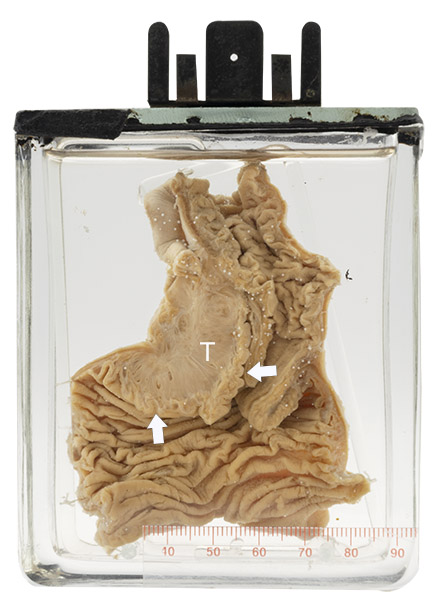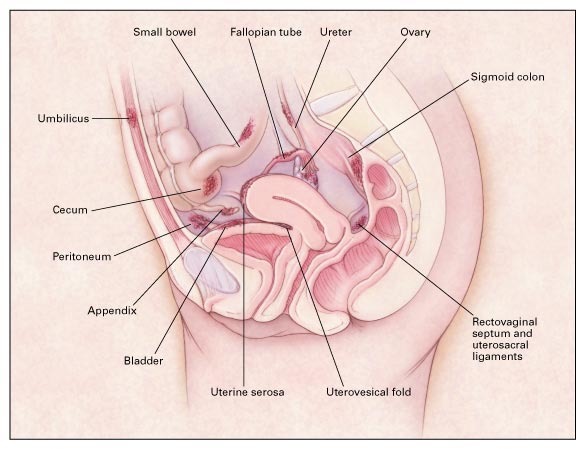

Age/sex: Female age unknown
Size: 10.6 x 8.8 x 3.9 cm
A segment of cecum is compressed by a well-defined grey tumor (T) beneath normal appearing mucosa (arrows).
Endometriosis
Endometriosis develops when endometrial tissue grows in a location other than its normal place on the inner lining of the uterus. It is most commonly seen on the external surface of the uterus, ovaries or Fallopian tubes, but can involve other pelvic structures such as the urinary bladder and sigmoid colon. The abnormally located endometrial tissue maintains its responsiveness to hormones that cause the normal menstrual cycle. Thus, it undergoes death (necrosis) and bleeding on a monthly basis. The blood and tissue fragments cannot be extruded like those in the usual uterine menstrual flow, and often cause fibrosis (scaring).
The most common symptoms are abdominal discomfort and pain. Occasionally, the abnormal tissue increases in size to form a tumor, such as in this specimen in which it caused bowel obstruction and resembled cancer of the colon.
Below: Potential sites of endometriosis.
Source: Figure 1. Common locations of endometriosis within the abdomen. From “Treatment of Endometriosis,” by DL Olive and EA Pritts. (2001). N Engl J Med. 345, 266-275. doi: 10.1056/NEJM200107263450407
